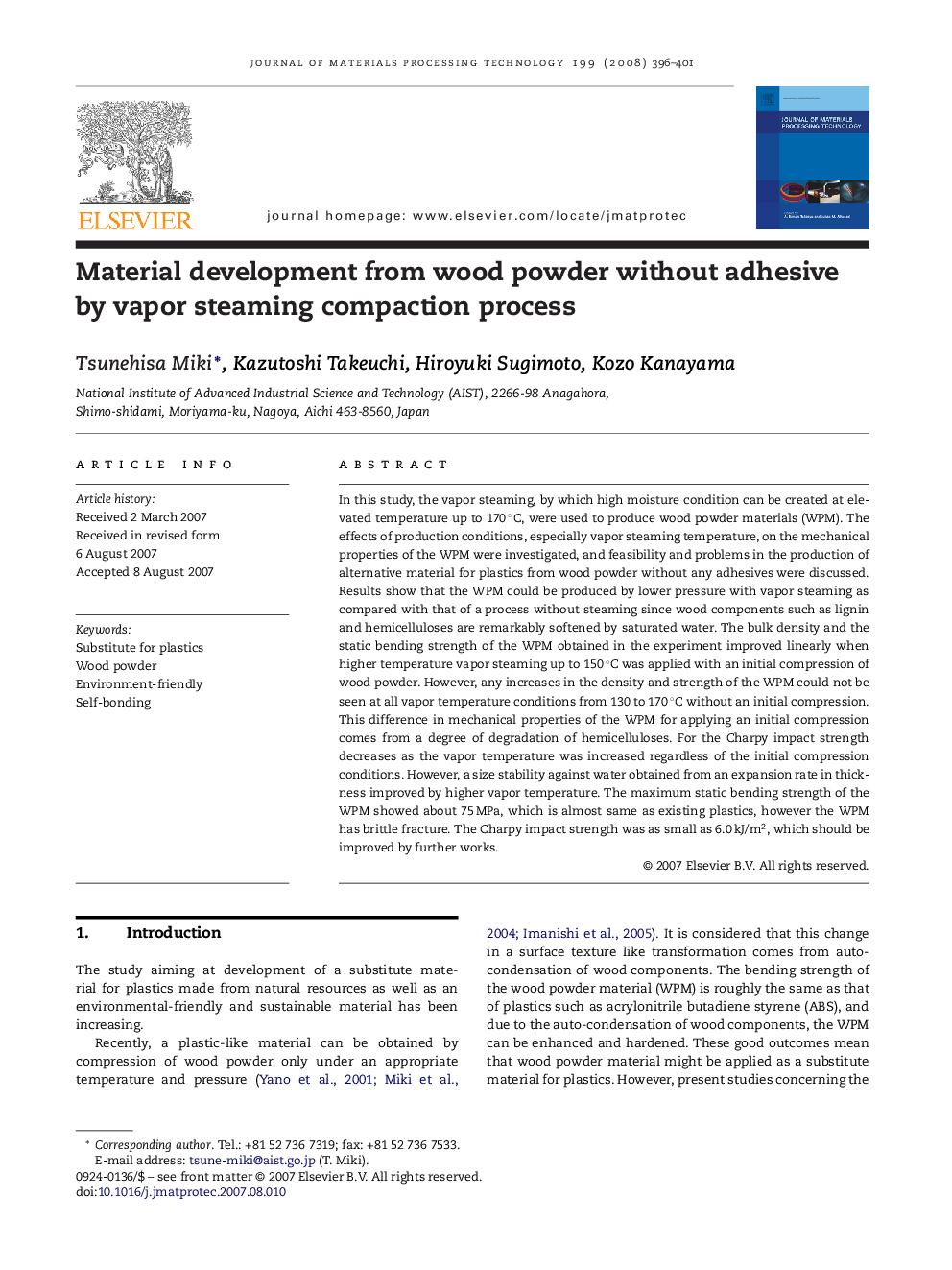| Article ID | Journal | Published Year | Pages | File Type |
|---|---|---|---|---|
| 791776 | Journal of Materials Processing Technology | 2008 | 6 Pages |
In this study, the vapor steaming, by which high moisture condition can be created at elevated temperature up to 170 °C, were used to produce wood powder materials (WPM). The effects of production conditions, especially vapor steaming temperature, on the mechanical properties of the WPM were investigated, and feasibility and problems in the production of alternative material for plastics from wood powder without any adhesives were discussed. Results show that the WPM could be produced by lower pressure with vapor steaming as compared with that of a process without steaming since wood components such as lignin and hemicelluloses are remarkably softened by saturated water. The bulk density and the static bending strength of the WPM obtained in the experiment improved linearly when higher temperature vapor steaming up to 150 °C was applied with an initial compression of wood powder. However, any increases in the density and strength of the WPM could not be seen at all vapor temperature conditions from 130 to 170 °C without an initial compression. This difference in mechanical properties of the WPM for applying an initial compression comes from a degree of degradation of hemicelluloses. For the Charpy impact strength decreases as the vapor temperature was increased regardless of the initial compression conditions. However, a size stability against water obtained from an expansion rate in thickness improved by higher vapor temperature. The maximum static bending strength of the WPM showed about 75 MPa, which is almost same as existing plastics, however the WPM has brittle fracture. The Charpy impact strength was as small as 6.0 kJ/m2, which should be improved by further works.
